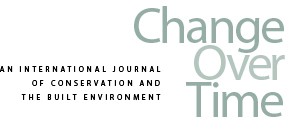
LEARNING FROM A LEGACY: Venice to Valletta | LOES VELDPAUS AND ANA PEREIRA RODERS
Changing Principles on and Approaches to Heritage
What is now called ‘‘cultural heritage management’’ has in the past primarily focused on the protection of monuments and areas designated as cultural heritage.1 Cultural heritage has seen a shift in theory, leading to changed principles and approaches. From an approach that avoided changes at all costs, protection is now defined as an approach in which changes are managed rather than prevented; preferably, in relation to the connected communities and their sustainable future.2 As a result, cultural heritage management has been moving toward a more inclusive approach, especially when it comes to managing heritage located in urban areas, which are constantly evolving and changing to meet the needs of their communities.
The earlier approach was focused on the protection of the tangible dimension of cultural heritage assets, for example, building materials, façades, or (groups) of buildings. Although this approach unquestionably helped to retain the cultural significance conveyed by those tangible remains, cultural heritage management was mostly defined by an intolerance to change. This positioned protection opposite development, given that one of the few constants in urban management is that cities will change over time. To overcome this dichotomic relation between urban (or even human) development and heritage management, the global discourse on heritage management has evolved considerably over the past decades. Notions such as the intangible, setting and context, and urban and sustainable development are included in current theory, as is a greater consideration of the socioeconomic needs of (historic) cities and their communities.3 This so-called landscape-based approach aims to manage change and integrates heritage management into the larger framework of urban development.
Visit Project Muse to read other articles featured in this issue.



